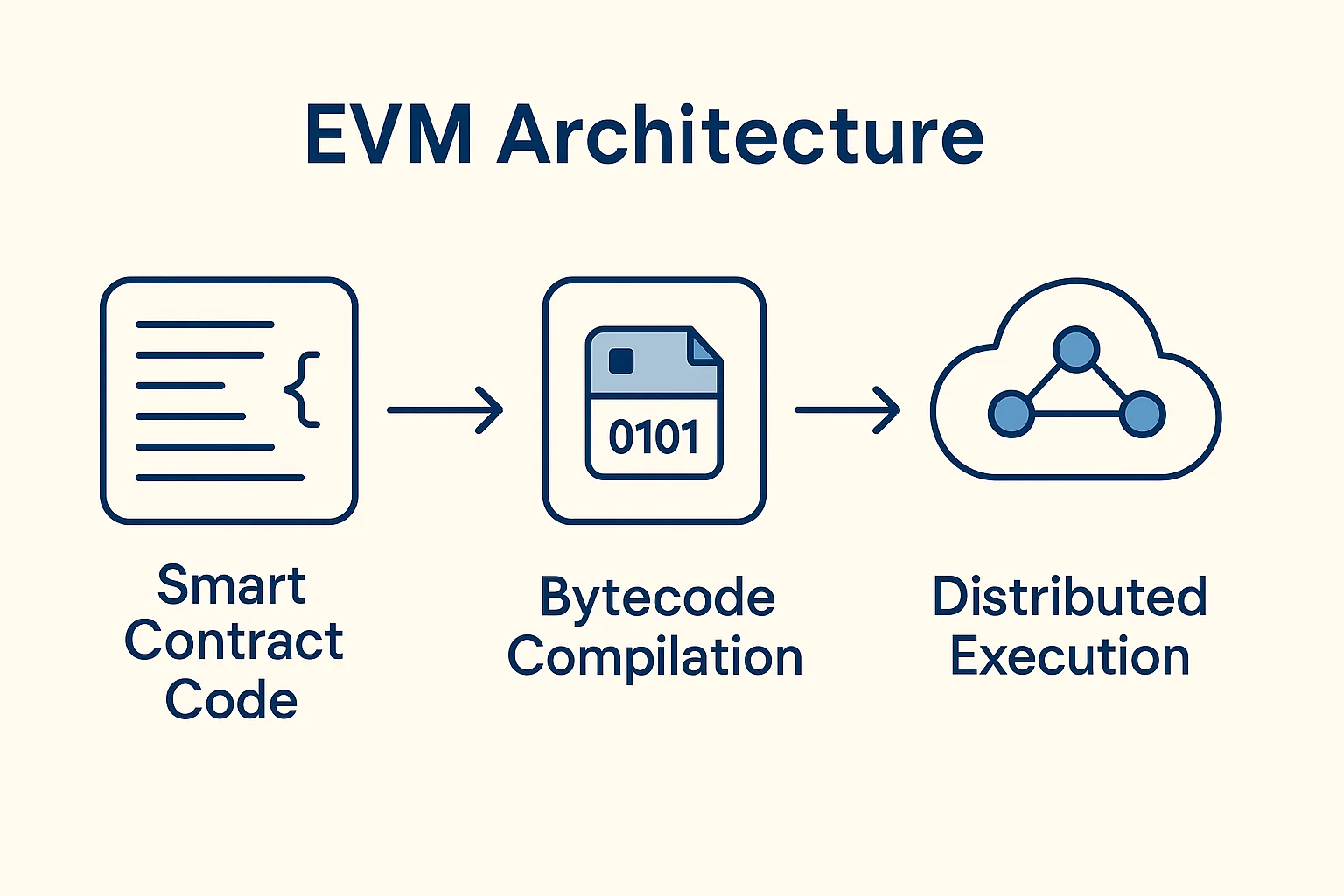EVM (Ethereum Virtual Machine)
EVM (Ethereum Virtual Machine): The World Computer
The EVM is the runtime environment where Ethereum smart contracts execute. It’s like having one giant computer that runs the same programs across thousands of machines worldwide.
The Ethereum Virtual Machine (EVM) is a decentralized computing environment that executes smart contracts on the Ethereum blockchain. Every Ethereum node runs an identical copy of the EVM, ensuring smart contracts produce the same results regardless of where they execute.
How the EVM Works
Bytecode execution converts smart contract code into EVM instructions that every node can understand and execute identically. This ensures deterministic results across the entire network.
Gas metering prevents infinite loops and resource abuse by charging computational costs for every operation. Complex operations cost more gas than simple ones.
State management tracks account balances, smart contract storage, and all other network data in a global state that updates with each block.

Real-World Examples
- All Ethereum dApps run on the EVM, from Uniswap to Compound to OpenSea
- EVM-compatible chains like Polygon and Avalanche can run Ethereum smart contracts without modification
- Layer 2 solutions often maintain EVM compatibility for seamless developer migration
Why Beginners Should Care
Developer network effects make EVM the most popular smart contract platform, with thousands of developers building compatible applications and tools.
Cross-chain compatibility allows moving dApps between EVM-compatible chains without rewriting code, providing flexibility and scaling options.
Learning investment in EVM-based platforms transfers to multiple blockchains, making it the most versatile smart contract skillset for developers.
Related Terms: Smart Contract, Gas Fees, Ethereum, dApp
